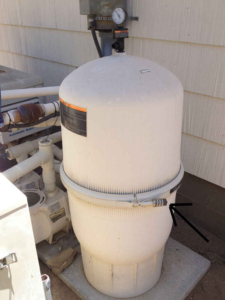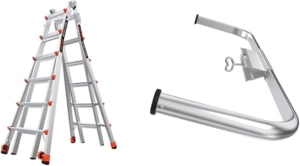Should I Get A Mold Inspection Testing When I’m Buying A House in Florida

Is it necessary to do mold inspection testing when buying a new home?
Depending on whom you ask, you will get a different answer. But answering this question is easy if you know how to do the cost-benefit analysis of getting a mold inspection versus the risks, costs, and benefits of not getting it. This post can help you make an informed decision.
Mold Inspection Testing: What is mold?
Mold is the name for the variety of fungi that grow on numerous materials in the home. Mold comes in many colors; black, white, green, or gray – but all have the quality of growing only in a specific environment.
Mold will grow in an area if the following conditions are present:
- Damp, humid, and wet conditions
- Poorly-ventilated spaces with temperatures of 77°-86° F
- Little or no sunlight exposure
- A food source; any organic matter
Mold Inspection Testing: Implications of mold growth
There are two crucial problems with the growth of mold in the home; compromised indoor air quality and damage to the materials in the house.
1. Damage to household items and building structures
When mold grows on any surface, it is feeding on that surface. The material can be wood, paper, carpet, fabric, wallpaper, drywall, ceiling tiles, or floorboards. If mold is left unchecked, it will compromise the strength and stability of the home’s structures.
2. Poor indoor air quality
The second problem with mold is how it affects the indoor air quality of homes. Some types of mold emit toxins and microbial volatile organic compounds (MVOCs). MVOCs are the source of the unpleasant odor often associated with mold. Beyond unpleasant odors, mold toxins and spores will aggravate allergies and cause or complicate respiratory problems. People who live in a mold-infested home will get sick more often.
Finding mold in the home
Because mold loves dank hidden parts of the home, it can be tough to spot. The fungus can grow in places with little sunlight exposure and poor ventilation. These are also the areas of the home that people rarely visit or see.
Some of the favorite places where mold hides are:
- Beneath carpets and carpet underpad
- Underneath floor and ceiling tiles
- Within HVAC ducts and plumbing
- Inside window sills and closets
- Underneath layers of wallpaper and drywall
- Inside and around appliances; refrigerator drip pans, front load washers, boilers, and heaters
- In the attic, basement, crawlspace, or inside the roofing structure
However, even when mold growth stays within these areas alone, it will still impact indoor air quality. That is because mold spores, toxins, and gases will spread throughout the home.
Does a home inspection detect mold?
Because there is no national standard for how home inspectors should deal with possible mold growth in a home, each inspector will deal with the problem differently
- Some home inspectors may report the presence of organic growths
- Some home inspectors will not check for mold at all
- Some home inspectors will intentionally check for mold
Ask your inspection company if and how their services include inspecting and/or testing for mold. Many companies offer Air Quality Control Testing. Florida has a specific process for how mold testing and mold remediation are managed throughout Florida.
Mold Inspection Testing: How not to buy a home with mold
What are the implications of buying a home with mold?
Apart from the health issues, there is the cost of mold remediation. Treating a home for mold can be expensive, says Florida Property. Depending on the extent of growth and duration, the prices can go as high as $20,000. That is not just the cost of removing mold. It includes the cost of removing, cleaning, disinfecting, or replacing contaminated areas of the home.
But this cost is easily avoided by doing a pre-purchase mold inspection.
Mold Inspection Testing: The pre-purchase mold inspection
During this process, a mold expert will go over every inch of the home with the sole purpose of finding mold. That includes a visual inspection of every part of the home, testing surfaces & materials, and the use of equipment designed specifically for mold detection.
A pre-purchase mold inspection will:
- Inspect and test surfaces; including behind wall paint
- Check indoor air quality (to detect signs of mold, such as spores)
- Check unreachable areas of the home for leaks and dampness
- Check for condensation issues that may predispose the home to mold growth
A pre-purchase mold inspection is the most reliable way to check a home for mold. Mold inspectors know where to look and have the detecting equipment, even if it is behind drywall or beneath tiles, wallpaper, and a painted surface.
Mold Inspection Testing: How much does a pre-purchase mold inspection testing cost?
It depends on the size of the home. The price of a mold inspection depends on the square footage. For a 4,000 square foot home, the cost is $300-$400. The price may go up to $700-$900 if the house is more than 4,000 square feet.
In conclusion, should you get mold inspection testing for the home you are buying? Compare the risk of spending $400 to do the mold inspection without finding mold versus $10,000 to remove mold after purchasing the home.
I hope this information has been helpful in providing additional insight for deciding on mold inspection testing. If you have additional questions and want to get in contact with GGR Home Inspections please send us a note, text, or call.







